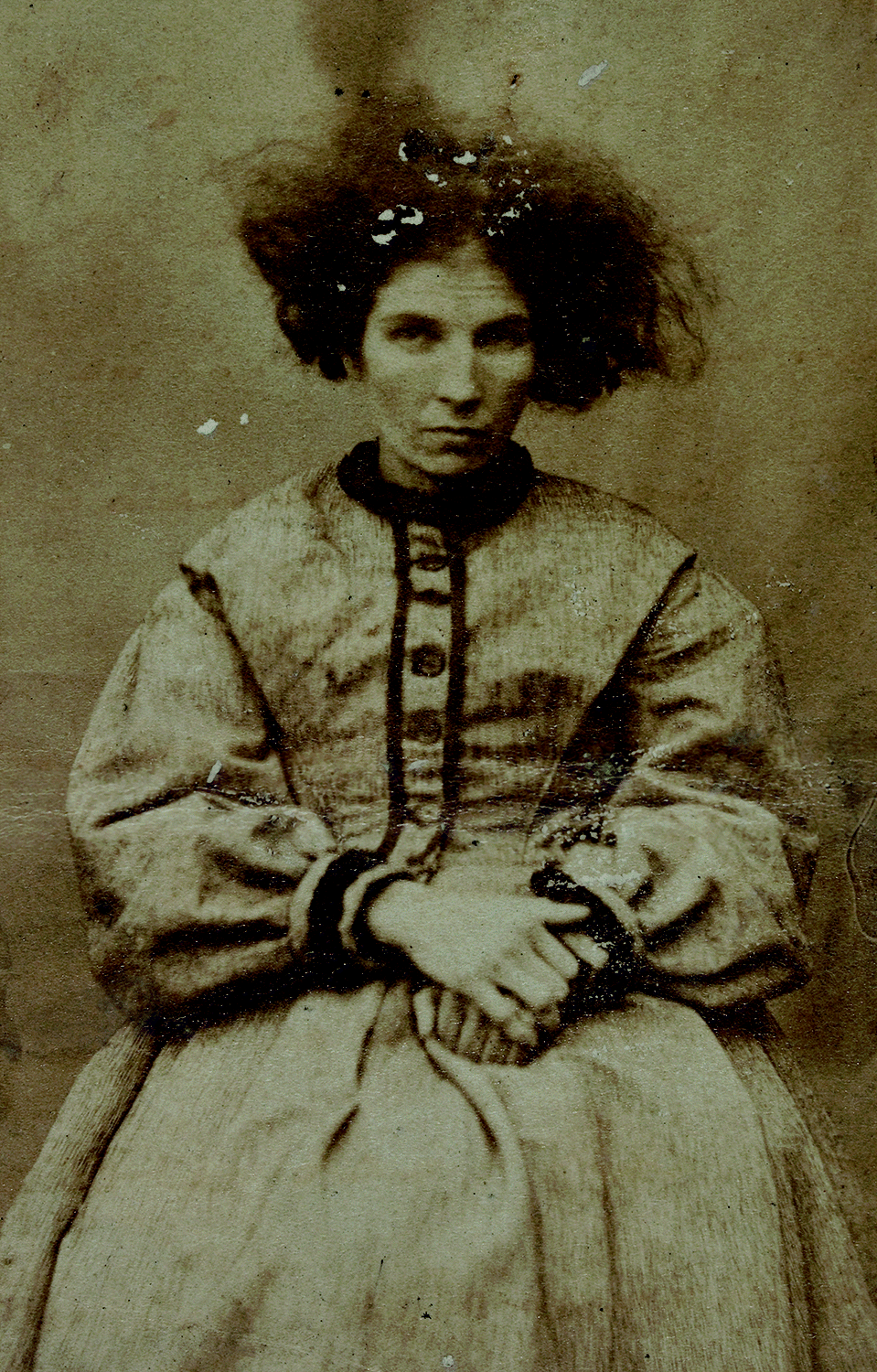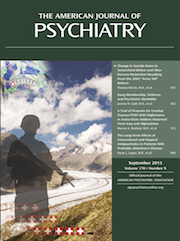With his first letter to Charles Darwin, dated May 20, 1869, the young psychiatrist James Crichton Browne enclosed a photograph of Ruth Lockwood, a patient under his care in the West Riding Pauper Lunatic Asylum in Wakefield, near York: “She is,” he said, “always excited & violent, & noisy, ... the state of her hair being a sure & convenient criterion, of her mental condition.” Quoting from
Hamlet, he continued, “When she is at her worst ‘each particular hair’ does literally ‘stand on end,’ ‘like quills upon the fretful porpentine’” (
1, p. 234). Crichton Browne’s descriptions of Lockwood and other patients delighted Darwin and marked the beginning of a fruitful correspondence in the run-up to Darwin’s
The Expression of the Emotions in Man and Animals, which was published in 1872 (
2,
3).
In documenting the skeletal, muscular, and behavioral elements involved in expressing emotions, Darwin relied particularly on information about children, native peoples, and psychiatric patients. These populations, he believed, “are liable to the strongest passions, and give uncontrolled vent to them” (
2, p. 20) and in doing so, reveal remarkable commonalities between humans and other animals, such as the raising of the eyebrows in surprise or the baring of the teeth in rage. Detailing these commonalities was one of Darwin’s main aims in
The Expression of the Emotions in Man and Animals.
Crichton Browne was only too happy to share photographs of his patients with Darwin. An enthusiast of Hugh Diamond’s pioneering use of photography in psychiatric diagnosis and treatment, he set up a photographic studio at the asylum (
3–
5). Some of his photographs, like the one here, illustrated case notes that he sent in answer to Darwin’s endless queries. The first of these queries was whether extreme fear or anger induced erection of the hair (piloerection) in humans, as it does in other mammal species, or whether it was, as Darwin wondered, a “mere poetic license” to talk about “hair standing on end” (
1, p. 242). Crichton Browne’s photograph of Lockwood and his assertion that “the same condition of the hair has been recorded in acute mania, hysterical mania, acute melancholia, & hypochondriasis” (
1, p. 234) eased Darwin's doubts.
Yet there are good reasons to doubt the analogy between erection of the hair in animals and in psychiatric patients. Crichton Browne’s observational evidence is at best anecdotal, and Lockwood’s photograph does not provide direct evidence of her hair standing on end, as opposed to being simply dry, frizzy, and brittle. Moreover, it is anatomically unlikely that the condition of her hair could be the result of piloerection, since the
arrectores pilorum muscles are not strong enough to raise the longer hair on the head. And even if it were, piloerection is more likely to be a symptom of a physical rather than a mental disorder. One commentator, for example, has dismissed Darwin’s analogy as “totally false,” suggesting that these patients suffered from “myxedema madness,” a form of hypothyroidism that includes symptoms of psychosis (
6,
7).


